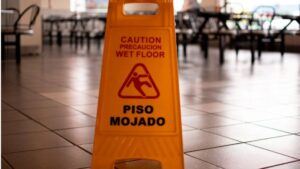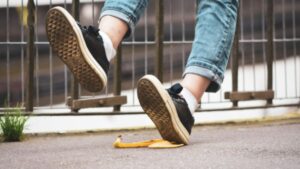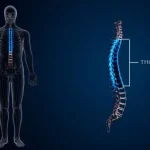Slip-and-fall accidents can pose serious consequences for businesses. Such incidents impact employee morale and customer perception and can lead to legal challenges. Businesses must recognize common practices that might elevate the risk of these accidents to maintain a safe environment for employees and patrons alike. By addressing potential hazards and implementing effective strategies, companies can reduce incidents and protect their reputation.

Neglecting Regular Maintenance
A primary factor contributing to accidents is inadequate facility maintenance. Regular inspections and prompt repairs ensure that floors, staircases, and restrooms remain safe for users.
Neglecting maintenance can lead to deterioration, which increases the likelihood of both minor and serious accidents. Business owners should establish a routine for assessing the condition of their premises. Inspecting for spills, loose flooring, or damaged handrails can significantly mitigate risks.
Claim processes can be complex and time-consuming, so making proactive adjustments minimizes the chances of needing legal assistance. Whether you get help with your claim at the Sumner Law Group or a different legal expert, establishing a safe environment can prevent many accidents from occurring. Proper lighting in hallways, parking lots, and common areas also plays a crucial role in accident prevention.
Poor visibility can increase the risk of trips, falls, and other hazards, making well-lit spaces essential for safety. Training employees to recognize and report potential dangers fosters a culture of accountability and proactive risk management.
Overlooking Employee Training
Employees play a critical role in accident prevention. Inadequate training may leave employees unaware of proper safety protocols, leading to increased risk. Organizations should prioritize teaching staff about recognizing hazards, reporting unsafe conditions, and responding effectively to incidents.
Training programs should showcase real-life scenarios, relevant regulations, and safety practices. Providing this knowledge helps employees understand the importance of vigilance in accident prevention. A team equipped with the right tools and awareness can effectively minimize incidents while promoting a culture of safety within the organization.
Regular refresher courses can reinforce safety protocols and ensure employees stay up to date with best practices. Encouraging open communication about safety concerns also empowers workers to take an active role in maintaining a secure environment. Employees are more likely to react effectively in high-risk circumstances and minimize possible harm when they have faith in their training.
Ignoring Weather-Related Hazards
Weather conditions can create additional slip and fall risks, especially during rain or snow events. Businesses must take appropriate measures to manage outdoor areas during inclement weather. Failing to clear sidewalks, entrances, or parking lots of water or snow can lead to hazardous situations for customers and employees.
Implementing a strategy to address weather-related challenges requires communication and swift action. Staffing designated teams to monitor and maintain walkways can prove effective. Using appropriate signage to warn customers of wet conditions or ensuring that mats are available can further contribute to safety efforts.
Inadequate Lighting
Poor visibility can significantly raise the risks associated with slip-and-fall accidents. Adequate lighting, especially in areas with high foot traffic, is crucial for maintaining safety. Installing lights in stairwells, hallways, and entry points ensures that individuals can traverse spaces without unnecessary risks. Incorporating motion-activated lights is a practical choice for enhancing visibility in less frequented areas.
Regularly assessing lighting conditions also promotes a safer environment. Not only does appropriate lighting help prevent accidents, but it also encourages customer confidence in the safety of the business.

Relying on Inconsistent Signage
Signage plays a significant role in informing individuals about potential hazards. Relying on inconsistent or unclear signage can sow confusion and elevate the risk of accidents. Clear, concise signs should be displayed to guide individuals in navigating spaces safely.
Employing standardized signage across the building reinforces safety messages that everyone can quickly understand. Whether it highlights wet floors, darkened areas, or construction zones, consistent communication of hazards fosters awareness among employees and customers alike. A safe environment, coupled with effective signage, promotes a better flow of movement through the establishment.
Failure to Conduct Regular Risk Assessments
Regular evaluations provide insight into potential hazards that could lead to slip-and-fall incidents. Failure to implement proper risk assessments prevents organizations from identifying areas for improvement. Businesses may identify weaknesses and create efficient plans to remedy them by carrying out these evaluations. Engaging external professionals to assess risks can offer neutrality and expertise, shedding light on overlooked issues.
Following a systematic process to evaluate potential risks can empower organizations to implement lasting strategies for accident reduction. Once risks are understood, tailored solutions can significantly drive improvements. Understanding the common business missteps leading to slip-and-fall accidents is crucial for any organization.
By prioritizing maintenance, training, employee awareness, weather management, proper signage, and risk assessment, companies can create a safer environment for everyone. Taking these steps can decrease the likelihood of accidents, minimize legal claims, and enhance overall workplace safety.







